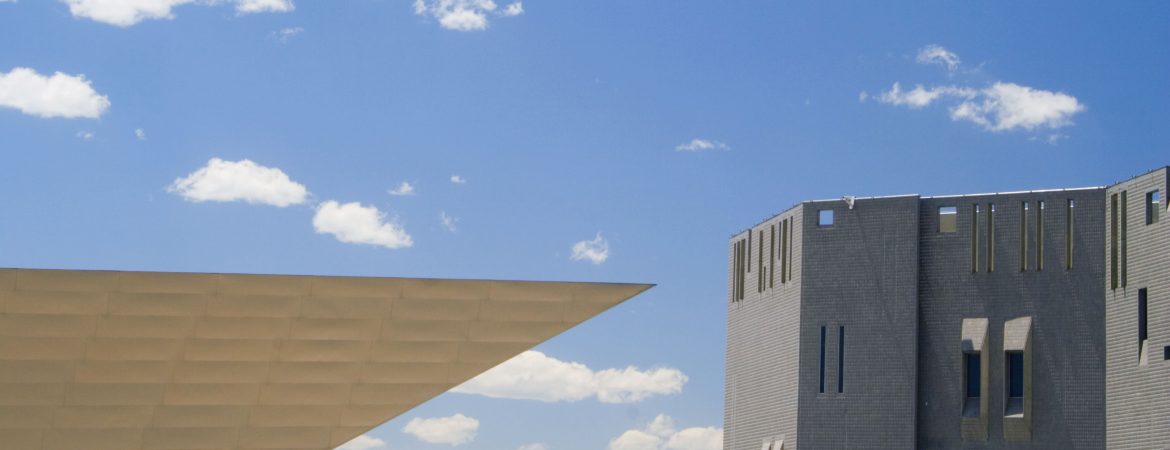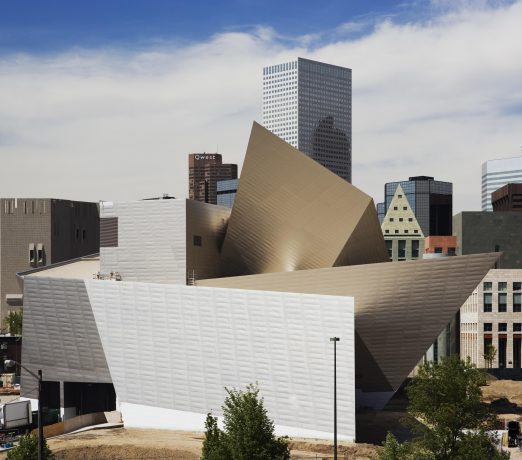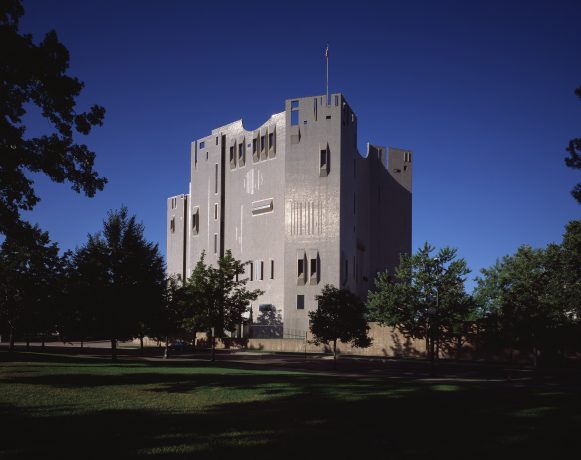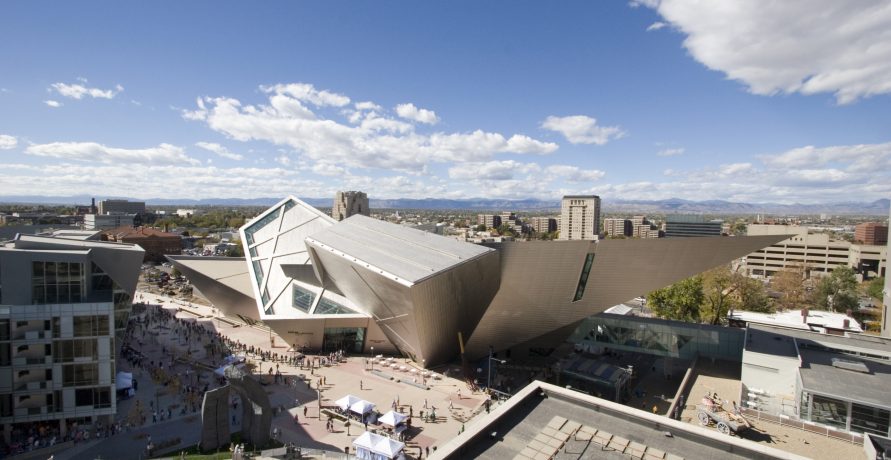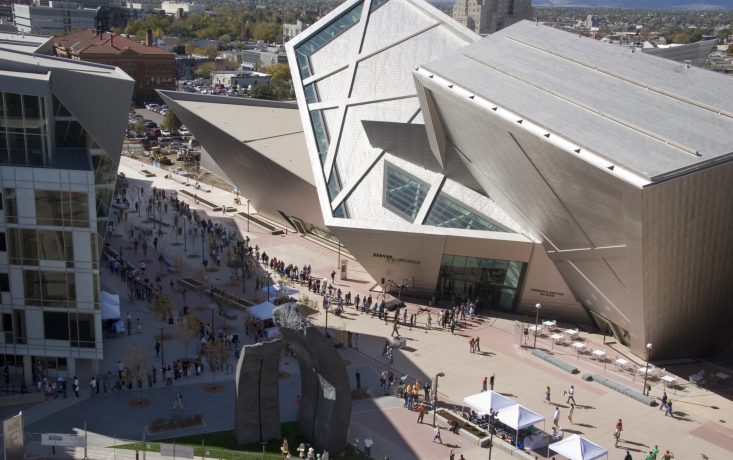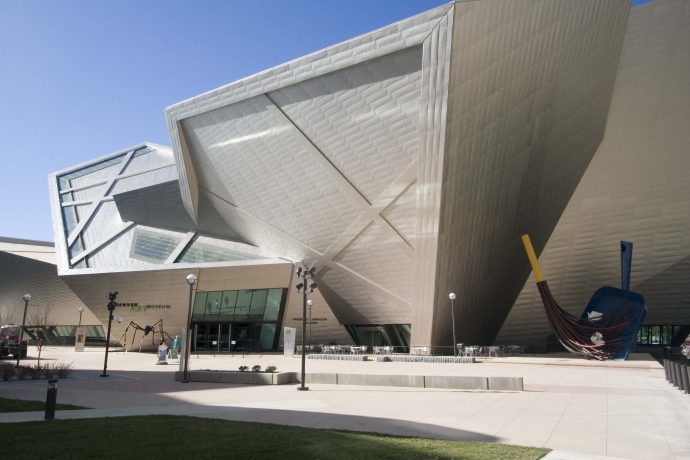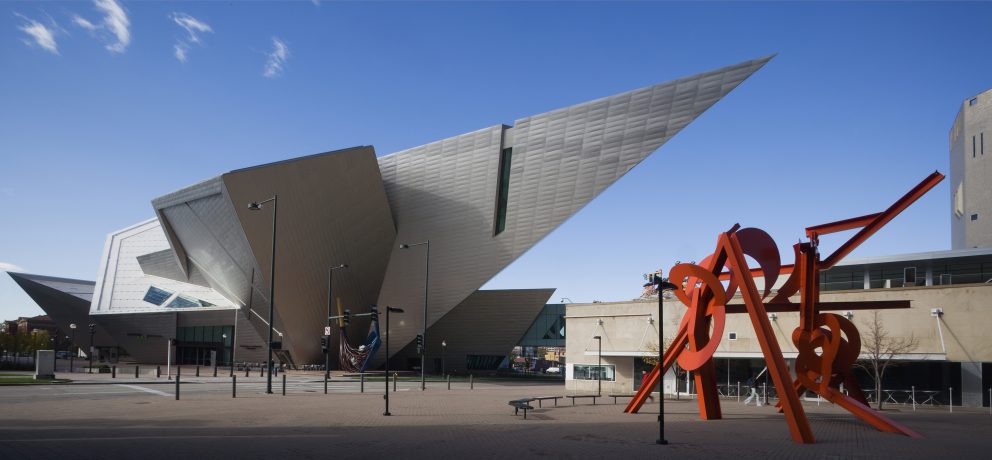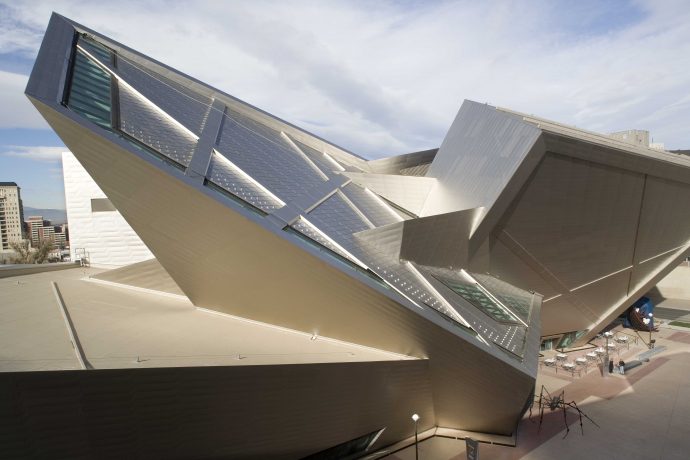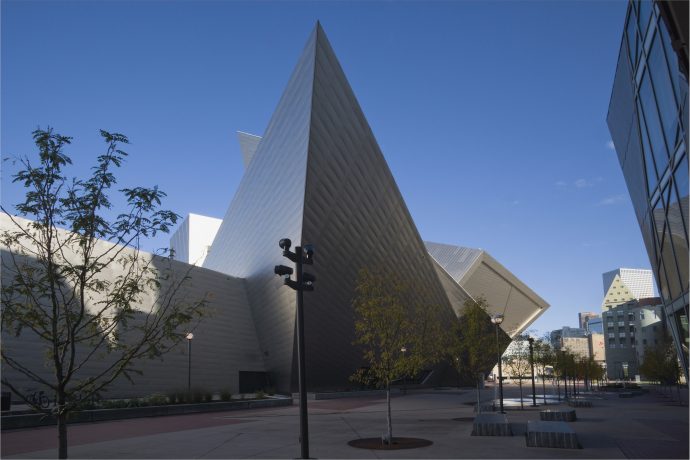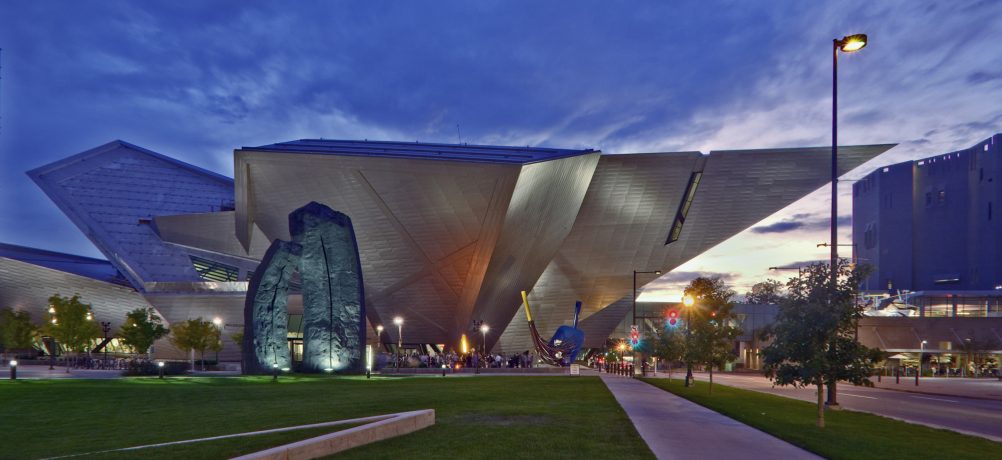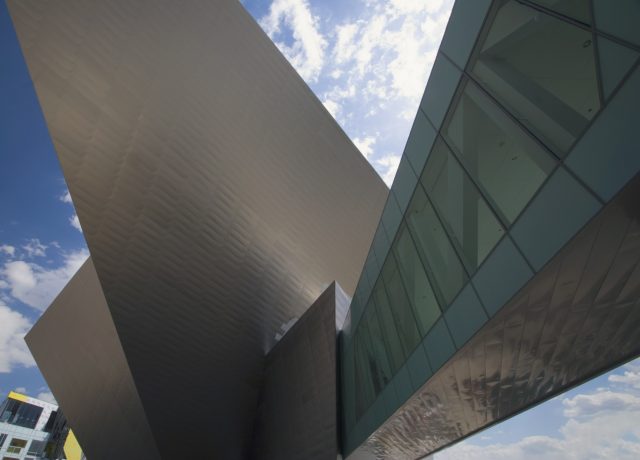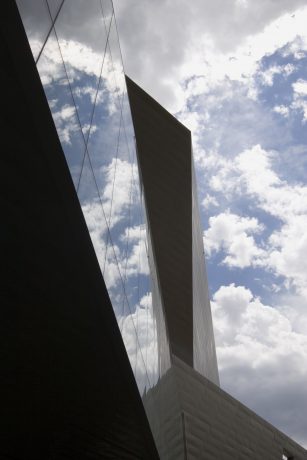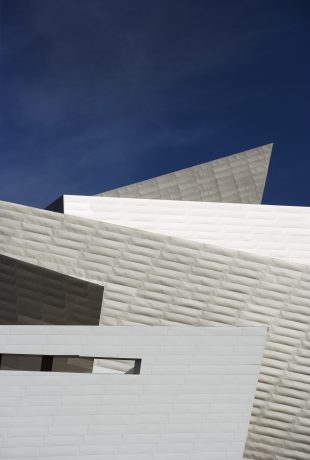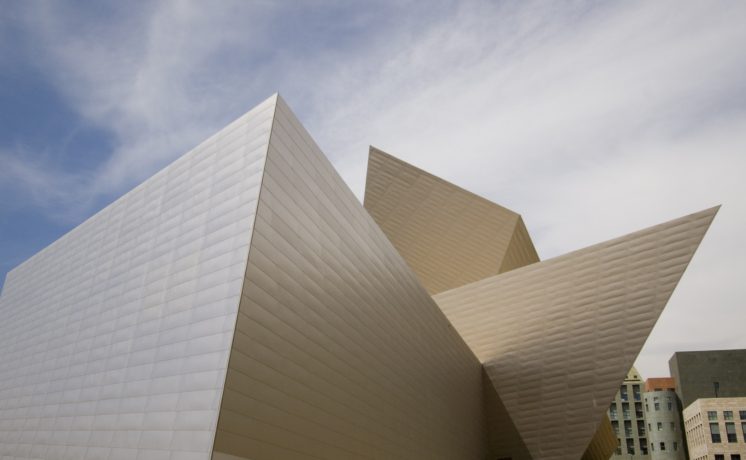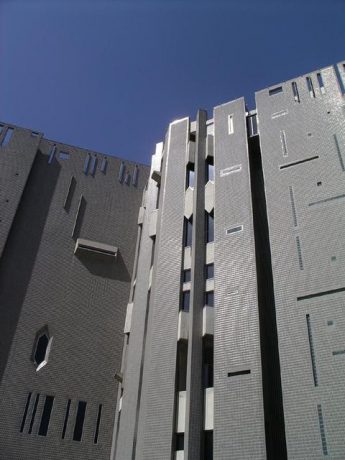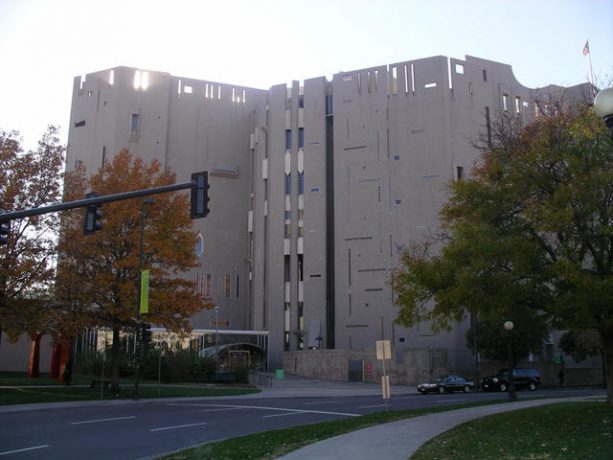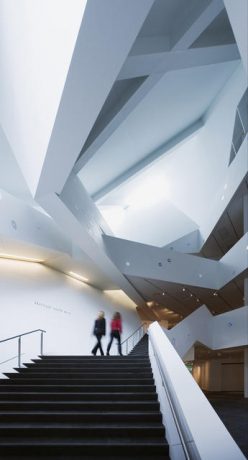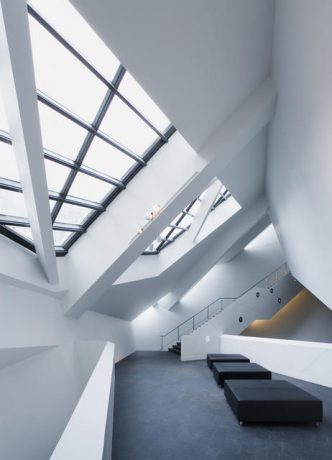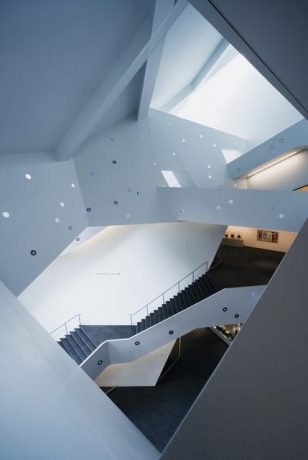Designed by well renowned architect Daniel Libeskind, the Frederick C. Hamilton building of the Denver Art Museum is a mystifying feat of architecture and engineering. Built as a new addition to the museum’s permanent collection in 2007, the 20 plane, titanium-paneled structure appropriately houses the museum’s contemporary art collection as well as traveling exhibitions, an art studio oriented towards the museum’s younger visitors, and a cafe/gift shop.
When Libeskind was designing the building he was inspired by the natural beauty of the Rocky Mountains and the crystals that are found within the environment. Not one of the 20 planes are parallel or perpendicular, much like the mountains the building aims to emulate. Libeskind also made the decision to cover the frame in titanium panels so it would reflect the well-attested Colorado sunshine. (Side note: This can be quite dangerous for the afternoon commuter heading down 13th street, don’t forget your sunglasses).
This style of architecture isn’t atypical for Libeskind. He is well known for his staggering and seemingly impossible designs. No stranger to controversy either, his work is usually met with a mixed reception of his viewers either loving or hating the finished works. He is responsible for the Jewish Museum in Berlin, the Imperial War Museum North in Manchester, and most notably the new World Trade Center complex in New York. Libeskind has a distinguished style that is easily recognizable.
When wandering through Denver’s Golden Triangle district this behemoth stands out amidst a sea of right angles, making it one of the architectural highlight’s within the city limits. You would be hard pressed to find another building in the city that even comes close to it stylistically, though it doesn’t take away from it’s surroundings or impact it negatively. It truly is a diamond, or in this case, geode, in the ruff.
The interior of the museum is no different from its dizzying exterior, with the occasional museum goer suffering from vertigo(!). The general consensus on the structure seems to be one of awe and appreciation, though on occasion you’ll overhear a visitor or two complain. Walking down the stairs can require holding onto the handrails (at least it does if you’re us).
So dig your heels in and hold on tight, the Hamilton building is a thing of architectural beauty and ferocity that is not to miss.
